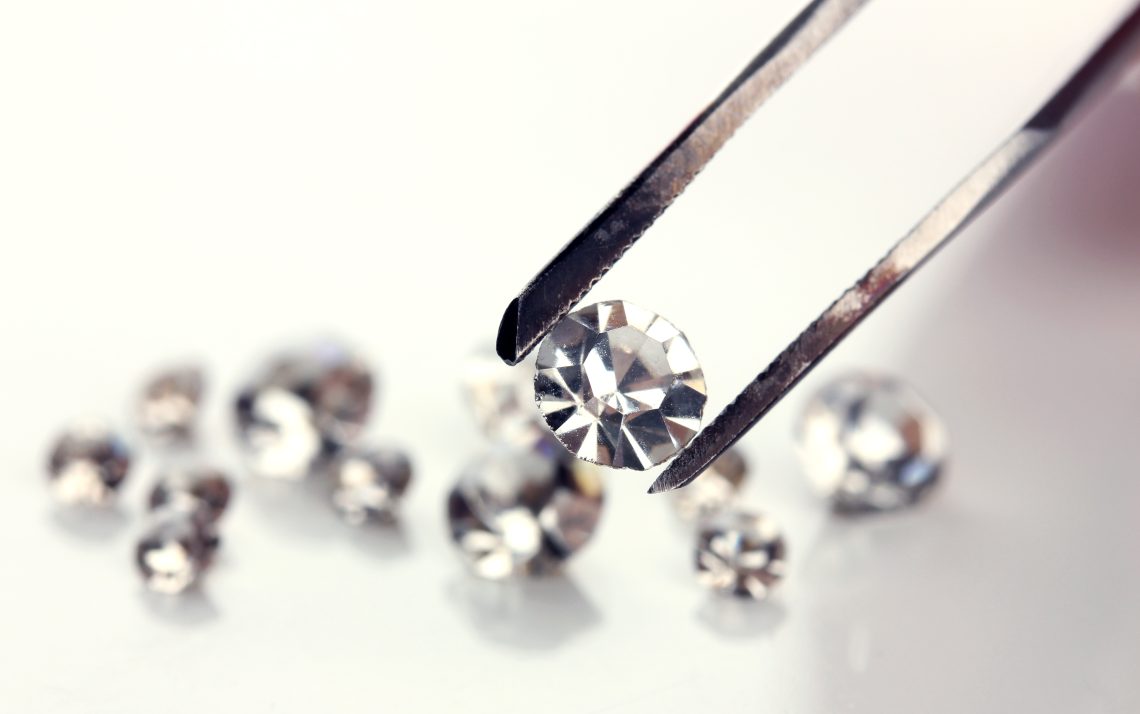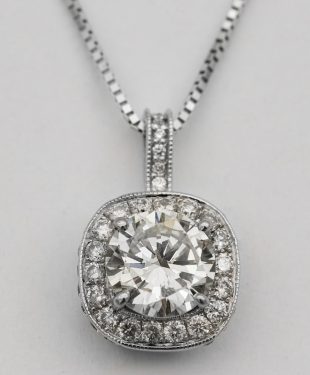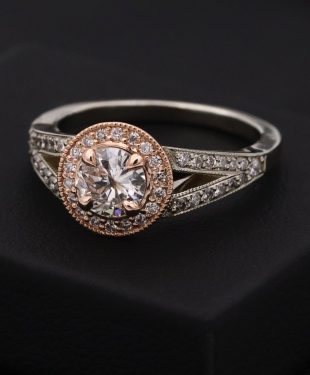Simulated versus Lab Created Diamonds
Today we’d like to talk about simulated versus lab created diamonds. Taking a trip through the world of diamonds can sometimes feel like you’re traversing an intricate maze. With terms like ‘simulated’ and ‘lab-created’ thrown around, it’s easy to get tangled in the confusion.
We completely understand how daunting this all may seem, especially when you know there are considerable differences between these types of gems. That’s precisely why we’ve crafted this article—to shine a light on this complex subject and guide your way through it.
We’ll break down everything from definitions to environmental impacts and weigh up their pros and cons—so stay tuned! In just a bit, you’re about to demystify the enigma that is simulated versus lab-created diamonds.
Definitions and Differences
Diamonds are naturally occurring gemstones formed deep within the Earth’s crust over millions of years, composed of carbon atoms arranged in a unique crystal lattice structure. Simulated diamonds, on the other hand, are man-made replicas that mimic the appearance and visual attributes of real diamonds but do not possess their chemical composition or physical properties of a 10k diamond ring.
Lab created diamonds, also known as synthetic or cultured diamonds, are grown in a laboratory using high-pressure high-temperature (HPHT) or chemical vapor deposition (CVD) processes to replicate the natural diamond formation process.
While they share some similarities with mined diamonds, lab-created diamonds differ in terms of their origin and production methods.
What are diamonds?
Diamonds are special stones that form deep in the earth. They take billions of years to make! Heat and pressure shape them into a hard, clear crystal. It’s pure carbon but made in a way that no other stone can match.
They shine bright when light hits them. This is why many folks love wearing diamond jewelry!
What are simulated diamonds?
Simulated diamonds are diamond alternatives that mimic the appearance of real diamonds but are not made of carbon. They can be made from materials like cubic zirconia or moissanite.
Simulated diamonds have value primarily for their aesthetic appeal and can be less expensive compared to natural or lab created diamonds. While they may look similar to real diamonds, simulated diamonds do not have the same physical, chemical, and visual attributes as mined or lab created diamonds.
It’s important for consumers to understand the distinction between simulated and other types of diamonds when making purchasing decisions.
What are lab created diamonds?
Lab created diamonds are diamonds that are grown in a laboratory instead of being mined from the Earth. They have the same physical, chemical, and visual attributes as natural diamonds.
Lab created diamonds are made up of pure carbon, just like mined diamonds. They are considered real diamonds because they have the same composition and properties. In fact, only specialized gem laboratories with scientific equipment can easily differentiate between lab-created diamonds and natural diamonds.
Lab created diamonds can be more affordable than natural ones, making them a popular choice for those seeking a diamond without the high price tag.
How do they differ?
Lab created diamonds and simulated diamonds differ in their composition and properties. Lab grown diamonds are made up of pure carbon, just like natural mined diamonds, while simulated diamonds are not.
Simulated diamonds can be made from materials like cubic zirconia or moissanite. As a result, lab created diamonds have the same physical, chemical, and visual attributes as natural diamonds, making them virtually indistinguishable to the naked eye.
On the other hand, simulated diamonds primarily have value in their aesthetic appeal and are not as valuable as natural or lab created diamonds. It is important for consumers to understand this distinction when considering purchasing a diamond to ensure they make an informed choice based on their preferences and budget.
Ethics and Morality
Ethical and moral considerations surrounding simulated and lab created diamonds include cost, environmental impact, and labor practices. Discover why these factors are important in deciding which type of diamond to choose.
Read more to understand the distinction between simulated and lab created diamonds.
Cost
Lab created diamonds are often more affordable than natural diamonds. The process of creating lab grown diamonds in a controlled environment allows for a more streamlined production, reducing costs associated with mining and distribution.
This means that consumers can purchase high-quality lab created diamonds at a lower price compared to their natural counterparts. Simulated diamonds, on the other hand, tend to be even more budget-friendly.
While they may look similar to real diamonds, simulated diamonds are made from materials like cubic zirconia or moissanite, which are less expensive than carbon-based lab created or natural diamonds.
Environmental impact
Lab created diamonds have a lower environmental impact compared to mined diamonds. The process of mining natural diamonds involves land disruption, deforestation, and the use of large amounts of water and energy.
It also contributes to greenhouse gas emissions and air pollution. In contrast, lab created diamonds are made in controlled environments using minimal resources. They do not require any mining or extraction processes, reducing their overall impact on the environment.
Additionally, lab created diamond production has a smaller carbon footprint and generates fewer pollutants compared to traditional diamond mining methods. Therefore, choosing lab created diamonds can be a more environmentally conscious choice for consumers concerned about sustainability and eco-friendliness.
Labor practices
Lab created diamonds have an advantage over simulated diamonds when it comes to labor practices. When lab grown diamonds are produced, the process is usually more controlled and less harmful to workers compared to mining natural diamonds.
This is because lab created diamonds are made in a laboratory setting using advanced technology, which reduces the need for manual labor and potentially dangerous working conditions.
On the other hand, simulated diamonds may still require mining or extraction of certain materials such as cubic zirconia or moissanite, which can involve harsh working conditions and low wages for miners.
Pros and Cons
– Diamond Simulants: While simulated diamonds may not have the same chemical composition as natural or lab created diamonds, they offer a more affordable option without compromising on visual brilliance.
– Lab Created Diamonds: On the other hand, lab created diamonds are physically and chemically identical to mined diamonds, making them an ethical and sustainable choice for those who want a real diamond alternative.
Diamond Simulants
Simulated diamonds, also known as diamond simulants, are man-made gemstones that imitate the appearance of natural diamonds. They may look similar to real diamonds but have different chemical and physical properties.
Simulants can be made from various materials such as cubic zirconia (cz) or moissanite, which gives them their diamond-like sparkle and brilliance. However, they are not composed of carbon like natural or lab created diamonds.
Simulated diamonds are often used as alternatives to real diamonds due to their lower cost. While they may offer a similar visual appeal, simulants do not hold the same value as natural or lab created diamonds because of their composition and lack of rarity.
Lab Created Diamonds
Lab created diamonds are not the same as simulated diamonds. They have the same physical, chemical, and visual attributes as mined diamonds. Only specialized gem laboratories can easily tell the difference between lab-created and natural diamonds.
Lab created diamonds are considered real because they have the same composition and properties as mined ones. They can also be more affordable than natural diamonds. It’s important for consumers to understand this distinction when making purchasing decisions.
Durability and Longevity
When comparing the durability of simulants and lab-created diamonds, it is important to consider their production processes and various factors that may influence their longevity.
Comparing the durability of simulants and lab created diamonds
Simulated diamonds and lab created diamonds differ in terms of durability. Lab created diamonds are made up of pure carbon, just like natural diamonds, making them extremely durable.
They have the same physical properties as mined diamonds and can withstand everyday wear without getting easily damaged or scratched. On the other hand, simulated diamonds, which can include materials like cubic zirconia or moissanite, are not as durable as lab created or natural diamonds.
They may be prone to scratches and damage over time. When choosing between the two, it is important to consider how long you want your diamond to last and how much wear and tear it will be exposed to.
Understanding the production processes
Lab created diamonds and simulated diamonds are produced in different ways. Lab created diamonds, also known as synthetic or manmade diamonds, are grown in a laboratory using advanced technology that replicates the natural process of diamond formation.
They are made by exposing a small diamond seed to extreme heat and pressure, allowing carbon atoms to bond together and form a new diamond crystal over time. This process creates diamonds with the same composition and properties as mined diamonds.
On the other hand, simulated diamonds are not made of carbon like real or lab created diamonds. Instead, they are made from materials such as cubic zirconia (cz) or moissanite. These gemstones are designed to mimic the appearance of real diamonds but do not have the same chemical makeup or physical properties.
Factors to consider when choosing between the two
When choosing between lab created diamonds and simulated diamonds, there are a few key factors to consider. One important factor is the visual appearance. Lab created diamonds have the same physical attributes as mined diamonds, so they have a similar sparkle and brilliance.
Simulated diamonds, on the other hand, may not have the same dazzling appearance because they are made from different materials like cubic zirconia or moissanite. Another factor to consider is cost.
Lab grown diamonds can be more affordable than natural diamonds, while simulated diamonds tend to be less valuable overall. Additionally, if environmental impact and ethical concerns are important to you, lab created diamonds may be a better choice as they have a lower eco-footprint compared to mined or simulated ones.
Conclusion
In conclusion, understanding the difference between simulated and lab created diamonds is crucial for consumers. Simulated diamonds are diamond alternatives that may not have the same composition or value as natural or lab grown diamonds.
On the other hand, lab created diamonds have the same attributes as mined diamonds and can be a more affordable option. Knowing these distinctions helps buyers make informed decisions when purchasing diamonds.
Read more jewelry articles at ClichéMag.com
Images provided by Deposit Photos, BingAI, Adobe Stock, Unsplash, Pexels, Pixabay & Creative Commons






